Ideas
5 Iconic Furniture and Decor Pieces from 1920s Interior Design You Need in Your Home
The 1920s were a revolutionary decade for interior design, marked by luxury, innovation, and the bold style of the Art Deco movement. The era was characterized by sleek lines, geometric patterns, luxurious materials, and a celebration of modernity. If you’re looking to infuse your home with the glamour and sophistication of the 1920s interior design, incorporating iconic furniture and decor pieces is a perfect way to achieve that. In this article, we’ll explore five must-have items from the roaring twenties and offer tips on how to incorporate them seamlessly into your modern home.
1. The Iconic Club Chair
The club chair is an unmistakable piece of 1920s interior design. Known for its deep seat, curved arms, and luxurious leather upholstery, the club chair became a symbol of comfort and sophistication. Originally popularized in France, this chair was often seen in gentlemen’s clubs, hence the name.
Features of the 1920s Club Chair:
- Materials: Typically crafted in rich, dark leather (brown or black), with wooden legs and a sturdy frame.
- Shape: Curved arms, deep seating, and a slightly reclined back for maximum comfort.
- Details: Nailhead trim and sometimes a tufted backrest for added elegance.
How to Use It in Your Home:
- Place a pair of club chairs in your living room to create a cozy conversation nook.
- Pair the chairs with a sleek, geometric side table to maintain the Art Deco vibe.
- Opt for modern fabric finishes, like velvet in jewel tones, to add a contemporary twist while honoring the original design.
Why It’s Iconic:
The club chair blends comfort and style, embodying the relaxed yet sophisticated spirit of 1920s interior design. Its timeless design ensures it never goes out of fashion.
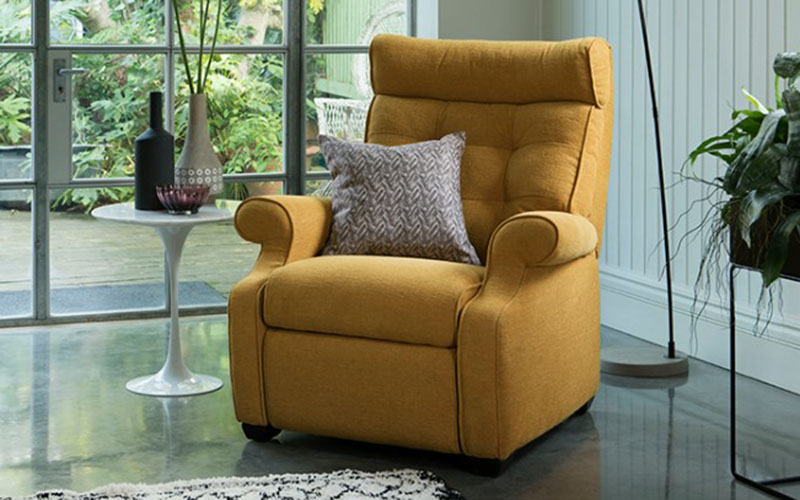
2. Art Deco Sideboard or Credenza
The Art Deco sideboard (also known as a credenza) is another hallmark of 1920s interior design. These pieces were designed not just for storage but also to showcase the era’s penchant for luxury and craftsmanship. Featuring bold lines, rich veneers, and often inlaid with exotic woods or metallic accents, the sideboard became a focal point in dining rooms and living spaces.
Features of a 1920s Sideboard:
- Materials: Mahogany, walnut, or oak, often with lacquered finishes and inlays.
- Design: Symmetrical patterns, angular or stepped shapes, and decorative hardware.
- Details: Mirrored or glass panels, brass or chrome handles, and marquetry detailing.
How to Use It in Your Home:
- Place a sideboard in your dining room for a mix of storage and display space.
- Use it as a media console in a living room or entryway for a sophisticated touch.
- Decorate the top with vintage items like crystal decanters, candlesticks, or framed Art Deco prints.
Why It’s Iconic:
The sideboard reflects the craftsmanship and elegance of the 1920s, while its geometric design makes it adaptable to modern interiors. It’s a perfect blend of functionality and style.
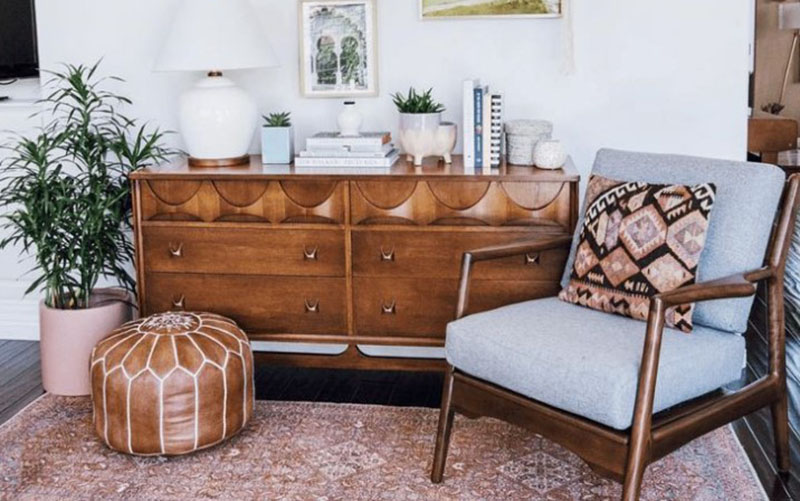
3. Sunburst Mirrors
No 1920s interior design is complete without the dazzling presence of a sunburst mirror. These mirrors, featuring radiating beams reminiscent of the sun’s rays, were popularized during the Art Deco era and remain a striking decor element to this day.
Features of a Sunburst Mirror:
- Materials: Often crafted from gold or brass, with wood or metal frames.
- Design: A central circular mirror surrounded by radiating beams or rays, sometimes with intricate detailing.
- Size: Available in various sizes, from small accents to large statement pieces.
How to Use It in Your Home:
- Hang a sunburst mirror above a fireplace, console table, or bed for an instant focal point.
- Use it in a foyer to add light and glamour to your entryway.
- Combine multiple smaller sunburst mirrors on one wall for a dynamic gallery effect.
Why It’s Iconic:
Sunburst mirrors capture the optimism and luxury of the 1920s. Their timeless elegance adds a touch of glamour and light to any space.
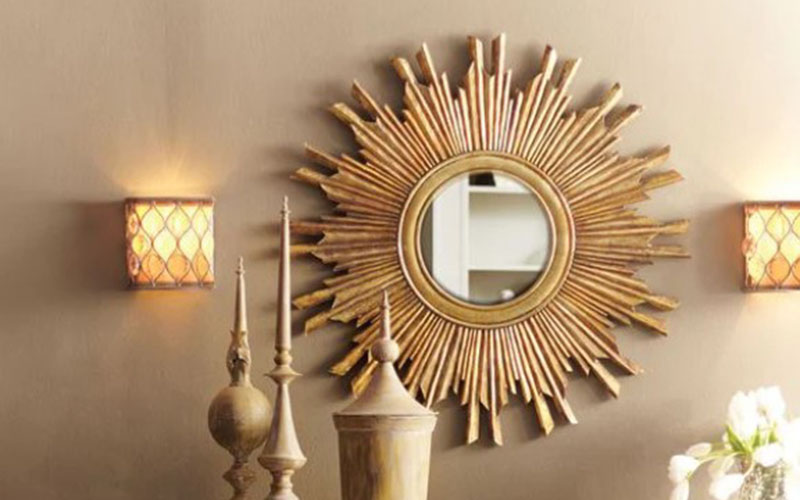
4. Geometric-Inspired Lighting Fixtures
Lighting was a crucial element of 1920s interior design, with fixtures that reflected the bold, geometric aesthetics of the Art Deco era. From chandeliers to sconces and table lamps, geometric-inspired lighting fixtures with stepped forms, clean lines, and luxurious materials were all the rage.
Features of 1920s Lighting Fixtures:
- Materials: Polished brass, chrome, frosted glass, and crystal.
- Design: Symmetrical patterns, stepped designs, and angular forms.
- Styles: Chandeliers, pendant lights, wall sconces, and table lamps.
How to Use It in Your Home:
- Install a geometric chandelier in your dining room or foyer for an instant statement piece.
- Use brass or chrome sconces to frame a mirror or artwork in your hallway.
- Add an Art Deco-inspired table lamp with a frosted glass shade to your bedside table or home office.
Why It’s Iconic:
These lighting fixtures embody the sleek, modern style of the 1920s while providing both function and artistic flair. They work beautifully in both traditional and contemporary spaces.
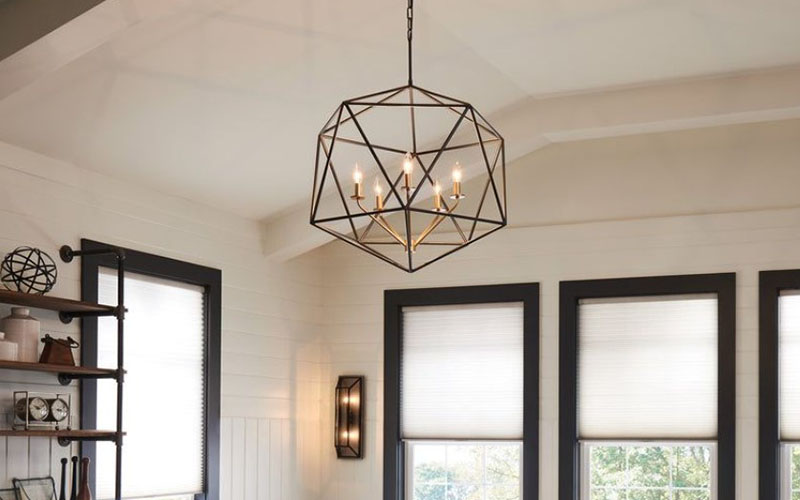
5. Zigzag and Chevron Patterns
Patterns played a huge role in 1920s interior design, and zigzag and chevron motifs were particularly prominent. These bold patterns adorned everything from rugs and wallpapers to upholstery and decorative screens.
Features of 1920s Patterns:
- Colors: Often black and white, gold, or bold jewel tones.
- Applications: Rugs, cushions, wallpaper, floor tiles, and decorative screens.
- Materials: Wool for rugs, silk for upholstery, and lacquered wood for screens.
How to Use It in Your Home:
- Lay down a black-and-white zigzag rug in your living room or dining area for a dramatic statement.
- Incorporate chevron-patterned throw pillows or upholstered chairs for a touch of 1920s flair.
- Use a decorative screen with a bold zigzag pattern as a room divider or statement piece.
Why It’s Iconic:
Zigzag and chevron patterns reflect the dynamic energy and modernity of the 1920s. They bring visual interest and movement to any room, keeping the decor lively and engaging.
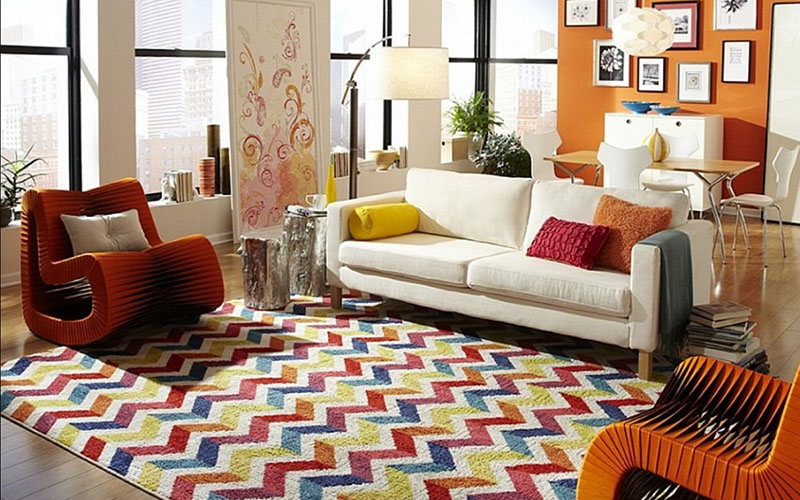
Final Thoughts
Incorporating these five iconic pieces of 1920s interior design into your home allows you to capture the glamour, sophistication, and artistry of the Roaring Twenties. From the timeless club chair to bold geometric lighting and stunning patterns, each element brings a touch of history while remaining relevant to modern interiors.
Embrace the elegance and excitement of the 1920s by selecting pieces that speak to your personal style. With the right balance, your home can be a beautiful blend of vintage charm and contemporary flair.
FAQs on 1920s Interior Design
Q: What defines 1920s interior design?
A: The 1920s were defined by Art Deco elements, characterized by geometric patterns, luxurious materials, and sleek, symmetrical designs.
Q: How can I mix 1920s design with modern interiors?
A: Focus on statement pieces like club chairs, sunburst mirrors, and geometric lighting fixtures, and blend them with neutral modern elements for balance.
Q: What colors were popular in 1920s design?
A: Rich jewel tones (emerald, sapphire, ruby), black and white contrasts, gold, and metallic accents were popular in 1920s decor.
Happy decorating! 😊✨


